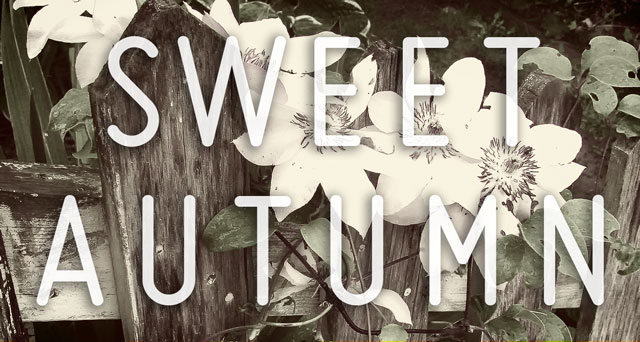Today I have another post from my amazing grandmother.

My lawn is brown as breakfast toast, the black eyed Susans’ eyes have paled to puny tan, and shriveled tomatoes hang limply on dry withered vines. My once lush garden is depressing and disheartening these days.
But outside my back door, climbing over a wooden post that marks our lot line is a vibrant green vine covered with frothy clouds of spectacular white star-shaped blossoms. The vine has entangled itself around the post, rambled into the nearby lilacs, wrapped itself around a rose bush, and trespassed over into the neighbor’s hedge.
Growing next to a paved alley at the far end of the garden hose, it received little water through the torrid summer. It is obvious then that sweet autumn clematis is easy to grow, does well in most any soil, and is an almost no care vine. But still it rewards me with myriads of white blooms eventually turning into seed heads that self-seed with ease.
Because it is so rambunctious, sweet autumn will need hard pruning in fall or early spring, and throughout the year its tendrils tend to root easily where they fall. We gardeners control these with our hoe.
Although in the South, sweet autumn is considered a noxious weed, Nebraskans continue to enjoy this robust vine and welcome its beauty in the late summer.
Plant specialists warn that all parts of the plant are poisonous if eaten, and may cause skin irritations when handled.
Needless to say, I haven’t garnished any salads with the blossoms nor have I fondled any of the plant parts, so I simply enjoy this pure white billowing mass at the end of a long hot season.
Great writing! Thank you Marge. Elaine
She is pretty spectacular.